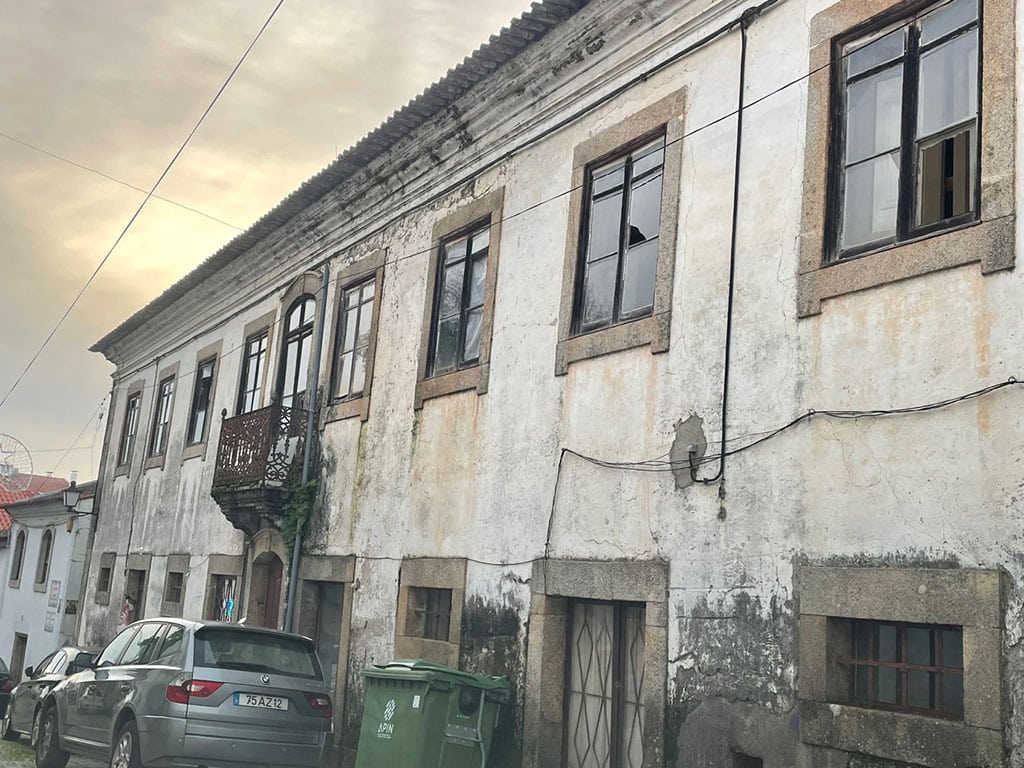Despite the views of many, Portugal’s rural property market is not limited to old farmhouses and idyllic village cottages.
The country’s ‘interior’ includes towns and cities where older properties can represent astonishingly good value when compared to prices in Lisbon, Porto and the Algarve.
The Central Region stretches from Figueira da Foz on the Atlantic coast to Penamacor and Monsanto near the Spanish border.
Towns in the western part of this region include Figueiró dos Vinhos, Castanheira de Pêra, Pedrógão Grande and Pedrógão Pequeno, the latter two almost side by side but divided by the river Zêzere at the Cabril dam.
These old towns benefit from their central location, half-way between Lisbon and Porto, useful to those who need a choice of airport. The area long has been used as country home locations for city-dwellers and never suffered the same level of desertification as eastern areas.
Pedrógão Grande has 2,000 inhabitants with many more living in its surrounding villages. The town charter dates to 1206, but there was Roman occupation in the area, visible at the remains of a Roman bridge across the Zêzere, close to the newer Philippine bridge that opened in 1610.
One notable ‘historic zone’ building that currently is being renovated is Casa da Albergaria de São Pedro, a Church-run hostel and medical facility from the 1600s.
The Council archivist, a wonderfully enthusiastic lady, with a vice-like grip on dates and local history, explained:
“It is a private property, presumably built in the 17th century. A hospital and an albergaria (hostel) are associated with this place. These basic institutions, in support of pilgrims and travellers on the way to Santiago de Compostela, worked as annexes to the 15th century Misericórdia de Pedrógão Grande located nearby, possibly the reason why they give the property the name of Casa da Albergaria de São Pedro.”
The upper floor has been a dwelling since the early 1800s, but the ground floor of the building had been used as a small grocery shop with an adjoining tavern, both remembered fondly. These businesses closed when Covid struck, and the elderly Lisbon-based owner decided to sell the property which had been in her family for as long as anyone can remember.
Turning this mixed-use building into a house, with its 600m2 garden, would be a challenge to any developer, but inspired work from Portimão-based Studio Arte and Concepto-Studio is ensuring that the history of the house remains evident, alongside an innovative, contemporary design.
Local sentiment is one of positivity and encouragement towards the remodelling of properties in the town and in many others. Locals tire of living for decades alongside empty houses that gradually succumb to weather and neglect and are delighted that new money is being invested and new buyers found.
“I will be so pleased to have a neighbour again after nearly 30 years. Foreign or Portuguese, they will be made very welcome!” commented one Pedrógão Grande resident while another, recalling the garden at Casa da Albergaria de São Pedro, said: “I was allowed to play in the garden but not go into the house. We ate oranges, tangerines and plums from the fruit trees, and I remember hiding behind the old walls of a chapel that are still there.”
A similar development is to be found over the river in Pedrógão Pequeno where a late 1700s property, overlooking the old town square, is nearing the end of an extensive upgrade. Casa Adelina, named after the town’s nurse who lived there for over 40 years and died in 2002, was left unoccupied until earlier this year when sold by its inheritor. Its many small rooms have been redesigned to create larger spaces, with ensuite bedrooms and a newly-configured terrace to give views over the square to the countryside beyond.
The local attitude to this highly visible development again is hugely positive with locals often stopping to chat to members of the work team, recalling Adelina’s life of local service.
One senior citizen complimented the contracts manager on the newly-completed roof, commenting, “you’ve got it right at last, that’s how the old tiles were laid before 1960 when the last new roof was put on”.
Sra Paula, the nearby shopkeeper, informs that another large, empty property on the old market square has been purchased “by foreign buyers” and is delighted that so much activity now is happening on her doorstep.
Many of those who have moved to an historic property in one of Portugal’s inland towns say it engenders a feeling of pride in helping preserve a part of Portugal’s history while they enjoy the pleasure and comfort of living in a beautifully restored and updated space.
Large town houses in need of renovation can still be found for €250-300 per m2, but for those going it alone, renovation costs rapidly can mount up and this path is not recommended for novices.
As for purchase cost for a fully upgraded, redesigned and renovated historic town property, buyers can expect to pay between €1,500 and €2,000 per m2, way below prices for similar properties in high-density tourist areas, but this level is expected to rise through 2024 as more canny buyers move to rural towns and villages.
By Paul Rees
The author runs Rural Properties, an innovative business that invests in the Central Region, buying, renovating and selling properties. For investment enquiries: www.rural-properties.com or contact info@rural-properties.com
























